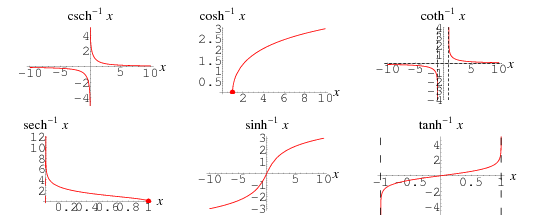

تاريخ الرياضيات

الاعداد و نظريتها

تاريخ التحليل

تار يخ الجبر

الهندسة و التبلوجي


الرياضيات في الحضارات المختلفة

العربية

اليونانية

البابلية

الصينية

المايا

المصرية

الهندية


الرياضيات المتقطعة

المنطق

اسس الرياضيات

فلسفة الرياضيات

مواضيع عامة في المنطق


الجبر

الجبر الخطي

الجبر المجرد

الجبر البولياني

مواضيع عامة في الجبر

الضبابية

نظرية المجموعات

نظرية الزمر

نظرية الحلقات والحقول

نظرية الاعداد

نظرية الفئات

حساب المتجهات

المتتاليات-المتسلسلات

المصفوفات و نظريتها

المثلثات


الهندسة

الهندسة المستوية

الهندسة غير المستوية

مواضيع عامة في الهندسة

التفاضل و التكامل


المعادلات التفاضلية و التكاملية

معادلات تفاضلية

معادلات تكاملية

مواضيع عامة في المعادلات


التحليل

التحليل العددي

التحليل العقدي

التحليل الدالي

مواضيع عامة في التحليل

التحليل الحقيقي

التبلوجيا

نظرية الالعاب

الاحتمالات و الاحصاء

نظرية التحكم

بحوث العمليات

نظرية الكم

الشفرات

الرياضيات التطبيقية

نظريات ومبرهنات


علماء الرياضيات

500AD

500-1499

1000to1499

1500to1599

1600to1649

1650to1699

1700to1749

1750to1779

1780to1799

1800to1819

1820to1829

1830to1839

1840to1849

1850to1859

1860to1864

1865to1869

1870to1874

1875to1879

1880to1884

1885to1889

1890to1894

1895to1899

1900to1904

1905to1909

1910to1914

1915to1919

1920to1924

1925to1929

1930to1939

1940to the present

علماء الرياضيات

الرياضيات في العلوم الاخرى

بحوث و اطاريح جامعية

هل تعلم

طرائق التدريس

الرياضيات العامة

نظرية البيان
Inverse Hyperbolic Functions
المؤلف:
Abramowitz, M. and Stegun, I. A.
المصدر:
"Inverse Hyperbolic Functions." §4.6 in Handbook of Mathematical Functions with Formulas, Graphs, and Mathematical Tables, 9th printing. New York: Dover
الجزء والصفحة:
...
3-6-2019
5236
Inverse Hyperbolic Functions
The inverse hyperbolic functions, sometimes also called the area hyperbolic functions (Spanier and Oldham 1987, p. 263) are the multivalued function that are the inverse functions of the hyperbolic functions. They are denoted ,
,  ,
,  ,
,  ,
,  , and
, and  . Variants of these notations beginning with a capital letter are commonly used to denote their principal values (e.g., Harris and Stocker 1998, p. 263).
. Variants of these notations beginning with a capital letter are commonly used to denote their principal values (e.g., Harris and Stocker 1998, p. 263).
These functions are multivalued, and hence require branch cuts in the complex plane. Differing branch cut conventions are possible, but those adopted in this work follow those used by the Wolfram Language, summarized below.
| function name | function | the Wolfram Language | branch cut(s) |
| inverse hyperbolic cosecant |  |
ArcCsch[z] |  |
| inverse hyperbolic cosine |  |
ArcCosh[z] |  |
| inverse hyperbolic cotangent |  |
ArcCoth[z] | ![[-1,1]](http://mathworld.wolfram.com/images/equations/InverseHyperbolicFunctions/Inline12.gif) |
| inverse hyperbolic secant |  |
ArcSech[z] | ![(-infty,0]](http://mathworld.wolfram.com/images/equations/InverseHyperbolicFunctions/Inline14.gif) and and  |
| inverse hyperbolic sine |  |
ArcSinh[z] |  and and  |
| inverse hyperbolic tangent |  |
ArcTanh[z] | ![(-infty,-1]](http://mathworld.wolfram.com/images/equations/InverseHyperbolicFunctions/Inline20.gif) and and  |

The inverse hyperbolic functions as defined in this work have the following ranges for domains on the real line  , again following the convention of the Wolfram Language.
, again following the convention of the Wolfram Language.
| function name | function | domain | range |
| inverse hyperbolic cosecant |  |
 |
 |
| inverse hyperbolic cosine |  |
 |
 |
| inverse hyperbolic cotangent |  |
 or or  |
 |
| inverse hyperbolic secant |  |
![(0,1]](http://mathworld.wolfram.com/images/equations/InverseHyperbolicFunctions/Inline34.gif) |
 |
| inverse hyperbolic sine |  |
 |
 |
| inverse hyperbolic tangent |  |
 |
 |
They are defined in the complex plane by
 |
 |
 |
(1) |
 |
 |
 |
(2) |
 |
 |
![1/2[ln(1+z)-ln(1-z)]](http://mathworld.wolfram.com/images/equations/InverseHyperbolicFunctions/Inline50.gif) |
(3) |
 |
 |
 |
(4) |
 |
 |
 |
(5) |
 |
 |
![1/2[ln(1+1/z)-ln(1-1/z)].](http://mathworld.wolfram.com/images/equations/InverseHyperbolicFunctions/Inline59.gif) |
(6) |
REFERENCES:
Abramowitz, M. and Stegun, I. A. (Eds.). "Inverse Hyperbolic Functions." §4.6 in Handbook of Mathematical Functions with Formulas, Graphs, and Mathematical Tables, 9th printing. New York: Dover, pp. 86-89, 1972.
Beyer, W. H. "Inverse Hyperbolic Functions." CRC Standard Mathematical Tables, 28th ed. Boca Raton, FL: CRC Press, pp. 181-186, 1987.
Gradshteyn, I. S. and Ryzhik, I. M. Tables of Integrals, Series, and Products, 6th ed. San Diego, CA: Academic Press, 2000.
Harris, J. W. and Stocker, H. "Area Hyperbolic Functions." Handbook of Mathematics and Computational Science. New York: Springer-Verlag, pp. 263-273, 1998.
Jeffrey, A. "Inverse Trigonometric and Hyperbolic Functions." §2.7 in Handbook of Mathematical Formulas and Integrals, 2nd ed.Orlando, FL: Academic Press, pp. 124-128, 2000.
Spanier, J. and Oldham, K. B. "The Inverse Hyperbolic Functions." Ch. 31 in An Atlas of Functions. Washington, DC: Hemisphere, pp. 285-293, 1987.
Trott, M. "Inverse Trigonometric and Hyperbolic Functions." §2.2.5 in The Mathematica GuideBook for Programming. New York: Springer-Verlag, pp. 180-191, 2004. http://www.mathematicaguidebooks.org/.
Zwillinger, D. (Ed.). CRC Standard Mathematical Tables and Formulae. Boca Raton, FL: CRC Press, 1995.
 الاكثر قراءة في التفاضل و التكامل
الاكثر قراءة في التفاضل و التكامل
 اخر الاخبار
اخر الاخبار
اخبار العتبة العباسية المقدسة

الآخبار الصحية















 قسم الشؤون الفكرية يصدر كتاباً يوثق تاريخ السدانة في العتبة العباسية المقدسة
قسم الشؤون الفكرية يصدر كتاباً يوثق تاريخ السدانة في العتبة العباسية المقدسة "المهمة".. إصدار قصصي يوثّق القصص الفائزة في مسابقة فتوى الدفاع المقدسة للقصة القصيرة
"المهمة".. إصدار قصصي يوثّق القصص الفائزة في مسابقة فتوى الدفاع المقدسة للقصة القصيرة (نوافذ).. إصدار أدبي يوثق القصص الفائزة في مسابقة الإمام العسكري (عليه السلام)
(نوافذ).. إصدار أدبي يوثق القصص الفائزة في مسابقة الإمام العسكري (عليه السلام)


















